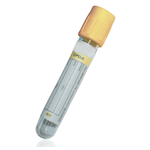Suitable Specimen Types
- Serum
- EDTA Plasma
- Fluoride Oxalate
- Li Hep Plasma
Sample Processing in Laboratory
Usual
Sample Preparation
Centrifuge
Turnaround Time
2 DaysSample Stability
4 ºC
Theophylline
General Information
Theophylline is a methylxanthine derivative which is widely used in the treatment of asthma, obstructive lung disease and neonatal apnoea. The primary therapeutic effect of Theophylline is due to relaxation of bronchial smooth muscle; however, theophylline has a variety of other effects. These include stimulation of the central nervous system and medullary respiratory centres, decreased peripheral vascular resistance, cardiac stimulation, and diuresis.
The effect of Theophylline is closely correlated with concentration of the drug in serum. Toxic effects of Theophylline usually occur at concentrations above 20 mg/L in adults, although mild symptoms can occur above 15 mg/L. These effects include anorexia, nausea, vomiting, headaches and nervousness. Severe side effects such as increased cardiac rate, arrhythmia, cerebral seizures, and respiratory or cardiac arrest occur at concentrations above 40 mg/L, but may also occur at lower concentrations.
Monitoring of Theophylline concentrations in serum is essential, since individuals can vary in their rates of Theophylline clearance, and severe toxicity has been observed without prior occurrence of minor side-effects. e.g. premature infants have very low rates of theophylline elimination whilst smokers eliminate Theophylline rapidly.
Patient Preparation
Sample should taken pre-dose (trough level).
Notes
None Given
Reference Range
10-20 mg/L (Therapeutic Range)
Specifications
- EQA Scheme?: Yes
-
EQA Status:
HEATH
